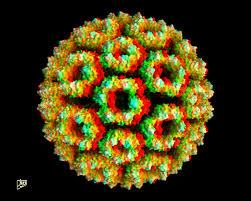Semliki Forest Virus infection is an uncharacterized nonfatal disease, probably mildly febrile and of short duration, in tropical Africa. Mayaro virus disease of the New World tropics is characterized by fever, headache, photophobia, conjunctival injection, generalized aches and pains, occasional nausea, and slight icterus with mild leukopenia for a period averaging three days. The infection is induced by bites of culicine mosquitoes infected with these antigenically very closely related viruses of the Semliki– Mayaro complex of Casals’ arbovirus group A.
Etiology.
Semliki Forest virus was first isolated in a locality of the same name in Uganda in 1944 from Aedes abnormalis mosquitoes. A strain known as Kumba, isolated from Eret- maphrodites mosquitoes in the West African Cameroons, has been shown to be antigenically the same. Recently the virus has been isolated in Mozambique. Infection with this virus has been recognized in man only by serologic survey studies that demonstrated development of specific neutralizing antibodies in blood sera of substantial numbers of native residents of West and East Africa. A specific human infection is known by accidental infection of a laboratory worker (Shope).
The virus is small, being in the range of 15 to 30 m/i, and is unusually resistant to heat, 60° C. for one hour being required for inactivation. It is neuro tropically pathogenic for mice by intracerebral and intraperitoneal inoculation; a variety of other laboratory animals, including guinea pigs, rabbits, and certain monkeys, are susceptible only by intracerebral inoculation. It also infects and grows in hamsters, embryonated eggs, and several tissue culture cell systems.
Mayaro virus was isolated on five occasions from ^blood of acutely ill residents of Trinidad in 1954 by intracerebral inoculation of suckling mice. It does not produce disease in adult mice. By means of cross complement-fixation and hemagglutination-inhibition tests, Casals (1957) demonstrated antigenic distinctness—but very close relationship—of neotropical American Mayaro virus with African Semliki Forest virus. Contrary to virologic custom, the differences that were evident by in vitro serologic tests could not be distinguished in mouse neutralization tests that are usually applied to show distinctive differences between arboviruses.
Semliki Forest and Mayaro viruses of Casals’ group A are most closely related to chikungunya virus, which is discussed in another part of this section. Mayaro may be identical with.Uruma virus, isolated from sick human beings observed in a Bolivian jungle.
Epidemiology.
By serologic surveys and outbreaks of disease in Trinidad and Brazil, it is apparent that: Semliki Forest-Mayaro virus diseases are widespread arbovirus infections in tropical Africa and South America. The slight but distinct antigenic differences between the two etiologic agents may reflect discontinuous evolution from a prototype virus owing geographic isolation in ecologic situations cruzer slightly from the old to the new world.
The nonhuman vertebrate blood source Semliki Forest and Mayaro viruses for mosquito vectors is unknown. Their appearance repeatedly in human infections over long time periods in many tropical countries indicates that they are geographically and endemically widespread, producing in newly exposed non immune persons epidemics such as occurred in the Guama River region, 100 miles east of Belem in the Amazon Basin of Brazil in 1955. The cases in this epidemic have provided the most comprehensive and detailed characterization of the human disease to date.
Clinical Manifestations of Semliki Forest Virus
After an incubation period believed not to exceed seven days, which is important in establishing possible exposure to infected mosquito bite, the disease begins with the onset of fever associated with headache, usually most severe in the frontal region. There follows the development of generalized aches and pains with severe myalgia in the back and occasional arthralgia. Photophobia is associated with conjunctival injection. Careful examination may reveal slight icterus without other skin manifestations. The patient may complain of epigastric pain and nausea and may have a bout or two of diarrhea and vertigo. Blood count reveals a slight leukopenia ranging from 5000 to 6000 cells. The disease is self-limited, with no sequelae or mortality. The average duration is three days, although fever has continued for as long as five days ir some cases.
Diagnosis
Because the clinical symptoms and signs are like those of many infections, specific diagnosis rests on positive results from laboratory examinations. Blood should be collected as soon as possible after onset of fever for inoculation of serum intracerebrally into suckling mice. Saline or buffered borate saline suspension of brain material harvested from the inoculated mice when they appear sick or moribund can be used as antigen for preliminary identification by complement-fixation test. In lieu of virus isolation from acute blood, paired sera can be used in complement-fixation and hemagglutination tests to detect a significant rise in titer against group or homologous serum antigens.
Treatment
The patient should be put to bed and treated symptomatically with antipathetic and analgesics for the fever and pain. No known therapy will shorten the course of the infection, so the problem is that of keeping the patient as comfortable as possible while the disease runs its self-limited course.
Prevention.
There is no specific prophylaxis other than control of the specific mosquito vector or avoidance of bite by mosquitoes in an area where control measures are not effective. Avoidance consists of the usual sleeping under mosquito nets, screening of houses, wearing appropriate clothing, application of repellents, and restricted movement during hoars of nm prieto activity.
